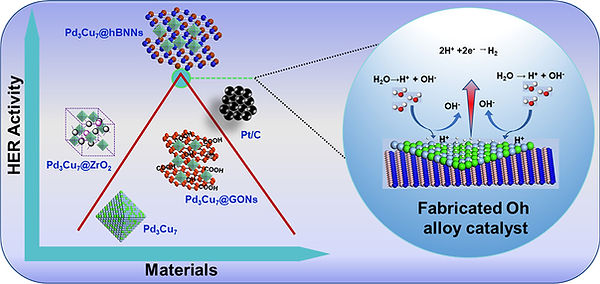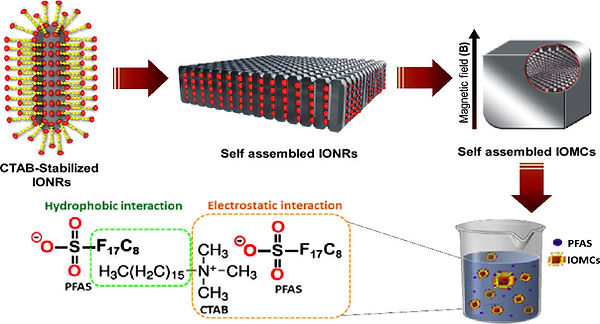Research Overview
Welcome to the forefront of nanoscience and nanotechnology research at our laboratory, where we specialize in the design and fabrication of anisotropic nanostructures with wide-ranging applications in catalysis, energy, and environmental remediation.
Our work delves deep into understanding the intricate relationship between the shape of nanostructures and their chemical reactivity at different surface planes, edges, and corners. Through conceptual study, we uncover the variations and distinctions of shape-dependent chemistry, paving the way for tailored applications in diverse fields.
Our lab has synthesized Tellurium and bimetallic telluride nanowires and explored for energy storage applications. Monodispersed anisotropic palladium, copper and bimetallic palladium structures have been successfully synthesized for catalysis applications. Further gold and silver nanostructures were studied in sensing pesticides.
Material Synthesis

Our research focuses on the controlled synthesis of anisotropic materials with diverse morphologies, including cubes, octahedra, rods, tubes, and dodecahedra. By tuning shape, size, and crystallographic orientation, we tailor directional properties critical for advanced functionality. Through innovative synthesis strategies, we engineer materials with enhanced optical, electronic, and catalytic performance. These efforts drive progress in next-generation technologies across energy, catalysis, environmental remediation and sensing applications.
Catalysis
Anisotropic materials, characterized by direction-dependent physical and chemical properties, have emerged as powerful platforms in catalysis, particularly for electrocatalytic water splitting and photocatalysis. Their unique structural asymmetry enables the exposure of specific high-energy facets, enhances charge separation, and promotes selective adsorption of reactants, all of which are critical for improving catalytic efficiency and reaction kinetics. By carefully designing anisotropic nanostructures—such as nanorods, nanosheets, and heterostructures—researchers can optimize active site availability, facilitate directional charge transport, and modulate surface electronic structures to achieve superior catalytic performance. As a result, anisotropic materials are increasingly seen as vital candidates for advancing next-generation energy conversion technologies.
Environmental Remediation
Anisotropic materials, characterized by direction-dependent properties, offer a powerful and innovative approach to water remediation. Unlike isotropic substances, whose behavior remains uniform regardless of orientation, anisotropic materials can be engineered to selectively interact with pollutants based on structural alignment, chemical functionality, or physical gradients. This unique capability enables more efficient separation, targeted adsorption, and controlled transport of contaminants in complex water systems. As water pollution challenges grow more sophisticated, anisotropic materials open new pathways for designing responsive, high-performance remediation technologies that surpass traditional, uniform solutions in both effectiveness and adaptability.
Energy Storage
Anisotropic materials, with their direction-dependent properties, offer unique advantages in energy storage applications. In supercapacitors, these materials enable enhanced charge transport, tailored porosity, and optimized electrode architectures. Their intrinsic structural anisotropy leads to superior performance metrics such as higher capacitance and faster charge-discharge rates. Exploring anisotropic systems opens new pathways for next-generation energy storage technologies.


